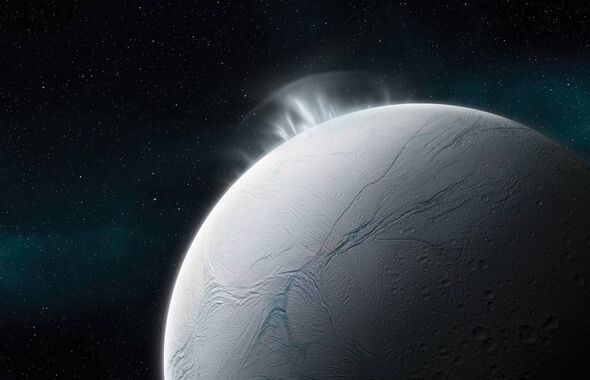Scientists Discover Signs of Life on Saturn’s Moon Enceladus

Recent findings suggest that one of Saturn’s moons, Enceladus, could potentially harbor extraterrestrial life. Scientists analyzing data from the Cassini spacecraft, which flew by the moon nearly two decades ago, have determined that Enceladus meets the necessary criteria to support life. This pivotal discovery has prompted the European Space Agency (ESA) to expedite plans for a mission aimed at searching for signs of life on this intriguing celestial body.
The ESA’s renewed interest in Enceladus follows a detailed analysis of ice grains collected by Cassini, which encountered the moon’s unique features approximately 740,000 miles from Earth. These ice grains, propelled into space by jets erupting from cracks near Enceladus’s south pole, contain organic molecules, indicating complex chemical reactions occurring within its subsurface ocean.
Breakthrough Findings from Cassini Data
Lead scientist Nozair Khawaja highlighted that Cassini consistently detected samples from Enceladus during its mission. Ice grains ejected from the moon struck the spacecraft’s Cosmic Dust Analyzer at speeds reaching 11 miles per second. This rapid impact allows for the detection of organic compounds that may otherwise remain hidden.
“The ice grains contain not just frozen water, but also other molecules, including organics,” stated Khawaja.
New discoveries include previously unseen oxygen-bearing compounds within the ice grains. On Earth, these compounds are crucial in forming more complex molecules essential for life. Khawaja noted the significance of these findings, stating, “There are many possible pathways from the organic molecules we found in the Cassini data to potentially biologically relevant compounds which enhances the likelihood that the moon is habitable.”
Future Mission Plans to Explore Enceladus
In light of these groundbreaking findings, the ESA is already devising plans for a future mission to Enceladus. The mission aims to explore the moon’s water jets and potentially land on its south polar terrain to collect samples directly. A team of scientists and engineers is currently considering the selection of advanced scientific instruments to be included in the spacecraft.
An ESA spokesperson remarked, “Enceladus ticks all the boxes to be a habitable environment that could support life— the presence of liquid water, a source of energy, a specific set of chemical elements, and complex organic molecules.” The anticipated mission would position Europe at the forefront of Solar System science, enabling researchers to seek direct evidence of life beyond Earth.
As the ESA continues to analyze the data collected by Cassini and prepares for upcoming missions, the scientific community remains optimistic about the potential for discovering extraterrestrial life on Enceladus. The ongoing exploration of this moon not only enhances our understanding of the Solar System but also raises profound questions about the existence of life beyond our planet.






